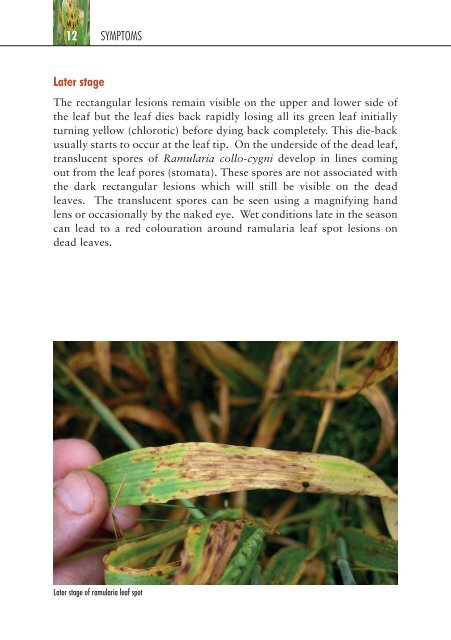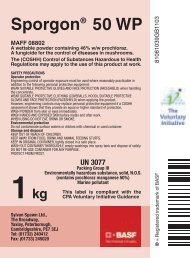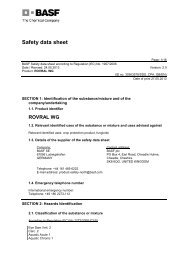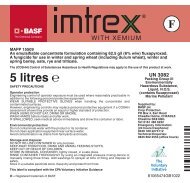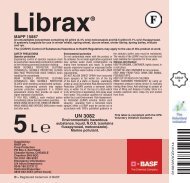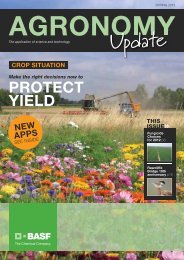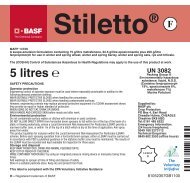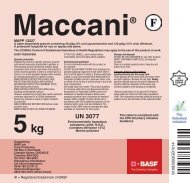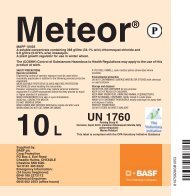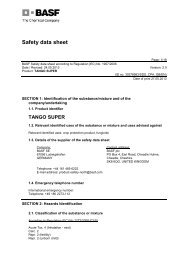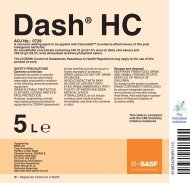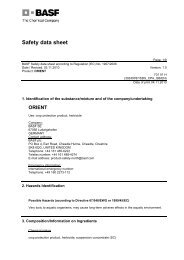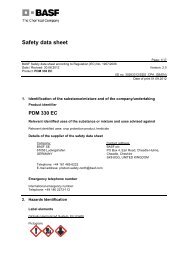a guide to the recognition and understanding of ramularia and other ...
a guide to the recognition and understanding of ramularia and other ...
a guide to the recognition and understanding of ramularia and other ...
You also want an ePaper? Increase the reach of your titles
YUMPU automatically turns print PDFs into web optimized ePapers that Google loves.
12<br />
Later stage<br />
SYMPTOMS<br />
The rectangular lesions remain visible on <strong>the</strong> upper <strong>and</strong> lower side <strong>of</strong><br />
<strong>the</strong> leaf but <strong>the</strong> leaf dies back rapidly losing all its green leaf initially<br />
turning yellow (chlorotic) before dying back completely. This die-back<br />
usually starts <strong>to</strong> occur at <strong>the</strong> leaf tip. On <strong>the</strong> underside <strong>of</strong> <strong>the</strong> dead leaf,<br />
translucent spores <strong>of</strong> Ramularia collo-cygni develop in lines coming<br />
out from <strong>the</strong> leaf pores (s<strong>to</strong>mata). These spores are not associated with<br />
<strong>the</strong> dark rectangular lesions which will still be visible on <strong>the</strong> dead<br />
leaves. The translucent spores can be seen using a magnifying h<strong>and</strong><br />
lens or occasionally by <strong>the</strong> naked eye. Wet conditions late in <strong>the</strong> season<br />
can lead <strong>to</strong> a red colouration around <strong>ramularia</strong> leaf spot lesions on<br />
dead leaves.<br />
Later stage <strong>of</strong> <strong>ramularia</strong> leaf spot


